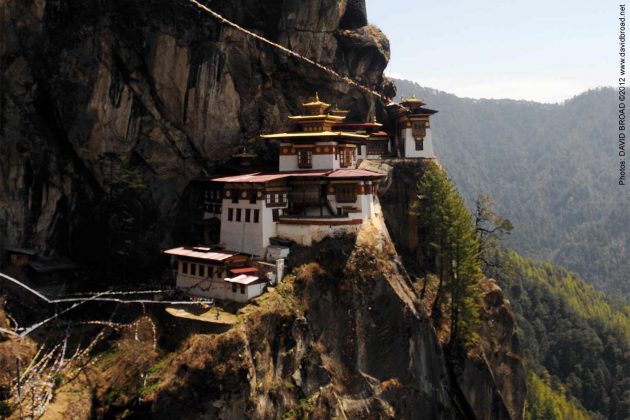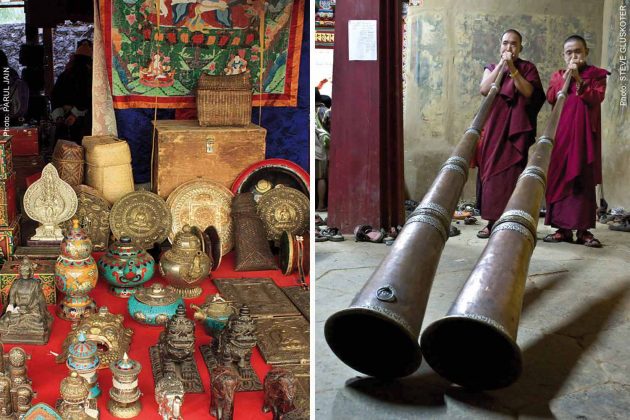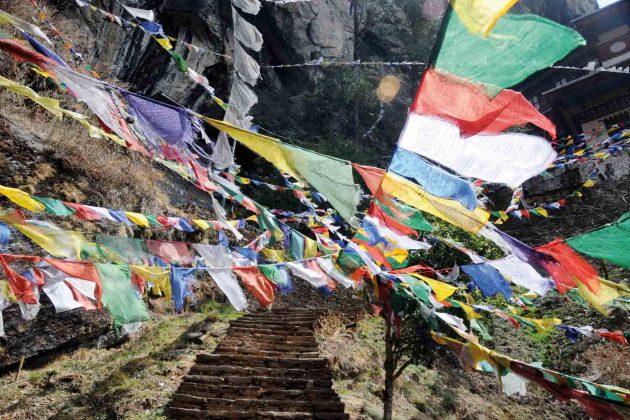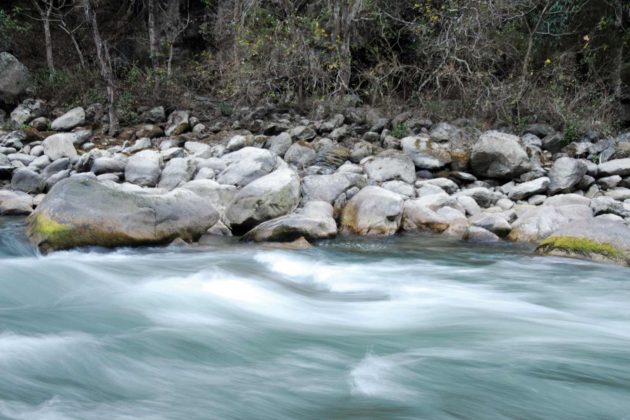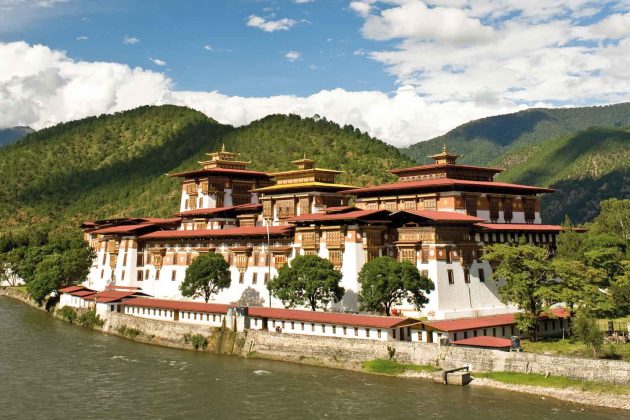Perhaps it was the fact that we had flown along the mighty Himalayas, glimpsing peaks we had only read about, including a sighting of a cloud draped Everest that made me believe, as I landed in Paro, that Bhutan was not quite of the Earth. Mountains ring the country, and everything about it is different, lost in time.
It has something to do with living in the mountains, I think; the unhurried pace, the softness in speech, the quick and easy smile that lights up faces, even those of strangers,when you meet their gaze.
Thimpu, at the crossroads
Everything about the city of Thimpu, where I was to spend five days attending Mountain Echoes, a literary meet, is charming. The clean broad roads, the discipline of the traffic, are some of the aspects that strike me. So different from the chaos of our cities.
But it is the people who win my heart. Their clothes are traditional, the colours are wonderfully varied, sometimes bright, other times pastel; the women float about like butterflies, smiling and chatting. And the men, many in their traditional attire, are strangely both masculine and graceful.
It takes a day to realise this is not part of a movie setting, but real. The fact that Bhutan has been a secluded kingdom for so long, has preserved a lot of its charm and customs. The country is more open to the world now, and one can see the influences that tourists and other visitors bring in. Locals worry too that the all pervading influence of television will blow in changes that might shake the country out of its present comfortable traditional way into the hurly burly that forms the tenor of life outside the kingdom.
One can see change waiting to happen in the shops that line Thimpu, in the tee shirts and jeans that are now being adopted by some of the younger set, in changing attitudes. One can see it too, in the shape of the new buildings coming up just beyond the main city; they are taller, more utilitarian and lean towards a shift from the typically colourful, decorated homes and offices that so well fit into the landscape, combining functionality with beauty and art.
A place is as much its people and its cities, and Bhutan, despite the quiet wind of change that flows through its streets, has an air of spiritual calm that immediately soothes my mind, and makes me feel carefree and uplifted. Perhaps it is the Buddhist way of life the Bhutanese still adhere to, or the quiet of the mountains that watch over the country, but something here tells me all is right with this world, as yet.
Nothing underlines this as much as the half day hike to the Tiger’s Nest Monastery [Taktsang Palphug Monastery].


